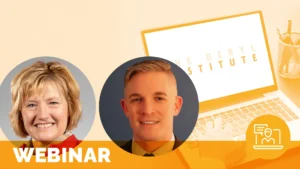PX Competencies: Making Experience a Priority, the VA Way

I suspect that very few of us worked our entire careers in patient experience. We came from other areas, but eventually we found it or it found us. For me, it was a temporary detail that led to an interest that led to a passion. Try not to laugh, but my undergrad is accounting. But measuring operational output and designing operations to achieve specific outcomes turns out to be a very transferable skill.
Early on, our Pathways nurse pointed to “Hardwiring Excellence” by Quint Studer as a starting point. What amazed me was not that the content was new or innovative; rather that it was organized into a 300-page operations plan that was easy to follow and included many catchy phrases to remember the key points. “Inspect what you expect” really resonated – maybe because of the auditor in me (honest, that’s not profanity) or maybe hearing Reagan’s “trust… but verify” many times as a child of the 80’s (refers to the Soviet Union’s agreement to reduce nuclear arms, for those of you too young to know.)
Expectations are challenging. First, you have to create them (hopefully with front-line staff buy-in.) Then you have to convey them. Then… that’s where it often stops. Then the numbers come in lower than expected. What could possibly have gone wrong?? Everyone signed the Behavior Standards. Everyone got emails. Everyone took the communication training. But how often do we go back to see whether people are living up to the expectations? We’d never give surgeons scalpels after they sign off that they read a book on surgery. Why wouldn’t we do the same for other practices? We establish competencies for so many tasks in health care; it’s natural that we would develop them for practices and behaviors that drive patient experience. So… we did.
The documents aren’t perfect or complete but give a starting point and range expectations for various roles in the organization. All are derived from some proven tactic that drives patient trust, alleviates frustration or concern, and supports HRO principles. To support psychological safety and to build awareness of patient experience as an organizational priority, we are slowly implementing them as feedback tools and for reinforcing expectations – not quite how true competencies are used. As an individual organization, we have to achieve competence in these practices and behaviors across the enterprise, or we risk losing patients to organizations that are more competent. As an industry, we should strive to achieve it, because we value our patients and our relationships with them.
Mental Health Outpatient Provider
Primary Care Outpatient Provider
Specialty Care Outpatient Provider
Author Bio:

Fred Lesinski is the Chief of Community Engagement & Veteran Experience at the Ralph H. Johnson VA Health Care System in Charleston, SC. Fred is a native New Yorker, Desert Storm US Air Force Veteran as an AWACS crew member, and a graduate of the University of Oklahoma.
Related content
-
 Culture & Leadership | Quality & Clinical Excellence | Staff & Provider Engagement
Culture & Leadership | Quality & Clinical Excellence | Staff & Provider EngagementRemediation Strategies to Reduce Shame and Stratify Support for Providers in Patient Experience
This webinar will review evidence regarding remediation of communication skills in healthcare providers, shame in healthcare, and how the two intersect. The experience at our institution includes two pilot programs designed for providers and entire clinics with suboptimal patient experience scores. We will present stepwise strategies, lessons learned, and qualitative and quantitative data that are
Learn more -
 Culture & Leadership | Staff & Provider Engagement
Culture & Leadership | Staff & Provider EngagementAligning Volunteer Programs with the Changing Landscape of Healthcare
Volunteerism in healthcare is an ever-changing landscape that requires assessment and realignment to ensure programs and needs within the health system remain relevant. In this session, participants will learn how to proactively participate in health system goals, the process for assessing and tracking their program efficacy, and how to align volunteer impact directly to the
Learn more -
 Culture & Leadership | Staff & Provider Engagement
Culture & Leadership | Staff & Provider EngagementMoving from “Good to Great”: Enhancing the Human Experience in Outpatient Care
Join us for an insightful webinar on Hartford HealthCare’s “Good to Great” (G2G) initiative, a transformative approach designed to improve patient experience across the organization. Launched in 2023, G2G uses a data-driven methodology to analyze patient experience and colleague engagement, identifying units as low-, middle-, or high-performing. Focusing on middle-performing teams, this initiative leverages strong
Learn more
